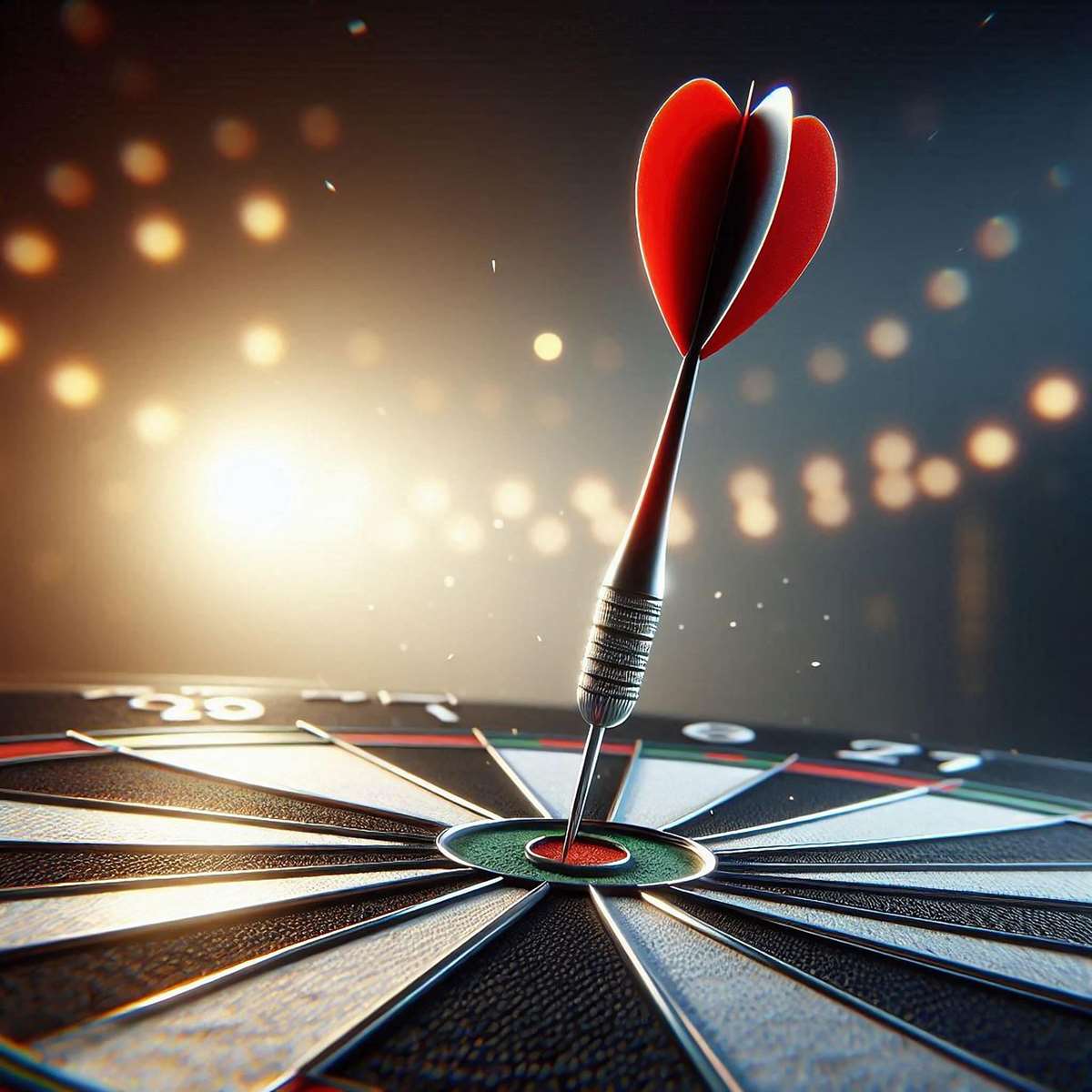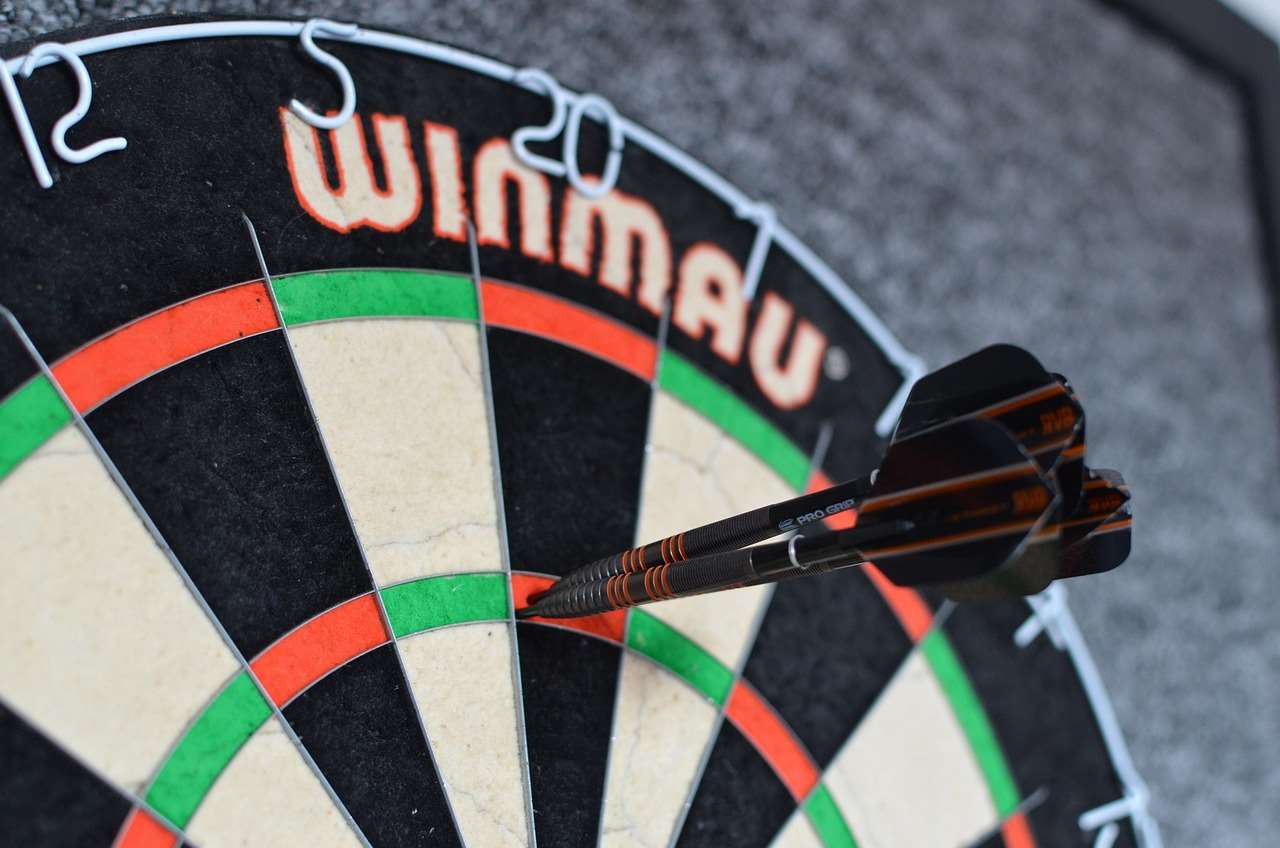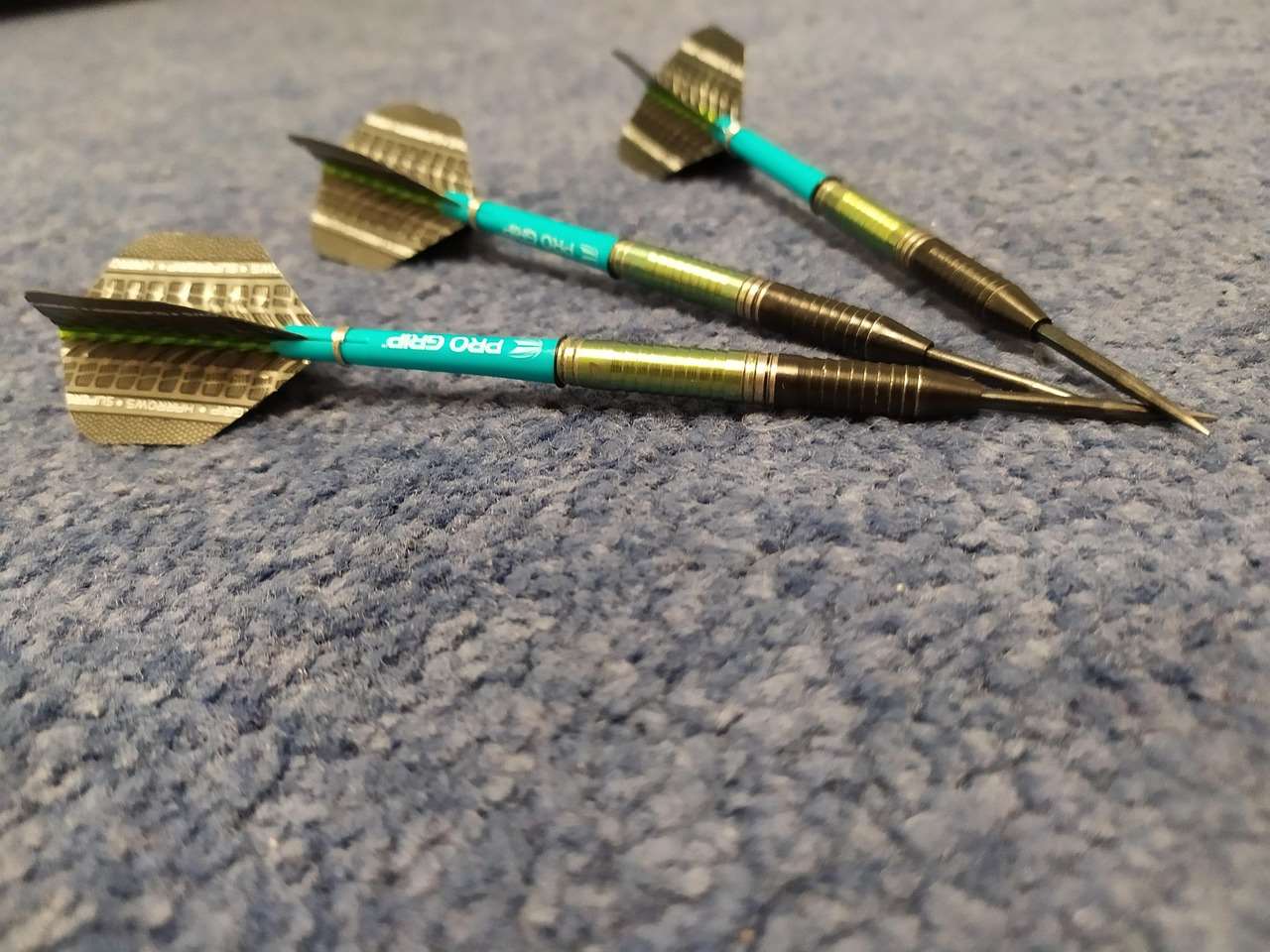The history electronic dartboards marks a fascinating evolution from traditional pub games to sophisticated digital entertainment. This article explores the key milestones, innovations, and cultural impact of electronic dartboards. You’ll also learn about the advancements in technology, the benefits these boards offer, and where the future of this popular game might be headed.
⚠️ Still Using Pen & Paper (or a Chalkboard)?! ⚠️
Step into the future! The Dart Counter App handles all the scoring, suggests checkouts, and tracks your stats automatically. It's easier than you think!
Try the Smart Dart Counter App FREE!Ready for an upgrade? Click above!
A Brief History of the Dartboard
To understand the evolution of electronic dartboards, it’s helpful to appreciate the origins of the traditional dartboard. Darts, in its most rudimentary form, likely began as a military pastime, with soldiers throwing spearheads or arrows at targets. Over time, this evolved into a more formalized game played in pubs and homes across England.
The modern dartboard as we know it, with its numbered segments, is often attributed to Brian Gamlin, a carpenter from Lancashire, England, who is said to have devised the standard layout in 1896. While this attribution is debated, the basic design quickly gained popularity. These early dartboards were made from elm wood, which was durable enough to withstand repeated throws. Later, sisal fibers became the material of choice, offering self-healing properties that significantly extended the board’s lifespan. Consider the equipment needed to enjoy darts.

The Dawn of Electronic Dartboards
The late 20th century brought about a wave of technological advancements that impacted nearly every aspect of daily life, and darts was no exception. The history electronic dartboards began in the 1970s as manufacturers sought to create a more convenient and user-friendly alternative to traditional sisal boards.
One of the primary motivations was to eliminate the need for manual scoring. With traditional dartboards, players had to meticulously calculate their scores after each throw, which could be time-consuming and prone to errors. Electronic dartboards automated this process, using sensors to detect where the darts landed and instantly displaying the score on a digital screen.
Early Innovations and Challenges
The earliest electronic dartboards were relatively simple, often using basic microcontrollers and rudimentary LED displays. The dart tips were typically made of plastic to prevent damage to the sensors. However, these early models faced several challenges:
- Durability: The plastic segments and sensors were often susceptible to wear and tear, leading to malfunctions.
- Accuracy: The scoring accuracy wasn’t always perfect, with occasional misreadings or bounce-outs.
- Cost: Electronic dartboards were initially more expensive than traditional sisal boards, limiting their appeal to casual players.
Despite these challenges, the convenience and novelty of electronic dartboards attracted a following, paving the way for further development and refinement.
Key Advancements in Electronic Dartboard Technology
Over the years, electronic dartboards have undergone significant technological advancements, addressing many of the initial shortcomings and enhancing the overall playing experience. These advancements have solidified the history electronic dartboards and its place in the modern game.
- Improved Sensors: Modern electronic dartboards utilize sophisticated sensor arrays that are more accurate and durable than their predecessors. These sensors can detect the precise location of the dart with greater reliability.
- Enhanced Scoring Systems: Advanced microprocessors and software algorithms have improved the accuracy and speed of scoring calculations. Many boards now offer a wide range of game variations and scoring options.
- Interactive Features: Some electronic dartboards incorporate interactive features such as voice prompts, sound effects, and online connectivity, adding a new dimension to the game.
- Durable Materials: Manufacturers have developed more robust plastic segments and housing materials that can withstand the rigors of frequent use.
These advancements have not only improved the performance of electronic dartboards but have also made them more accessible and appealing to a broader audience.

The Benefits of Using Electronic Dartboards
Electronic dartboards offer several advantages over traditional sisal boards, contributing to their growing popularity among both casual and serious players.
- Automatic Scoring: The most significant benefit is the automatic scoring system, which eliminates the need for manual calculations and reduces the risk of errors.
- Multiple Game Options: Most electronic dartboards offer a variety of game variations, such as 301, 501, Cricket, and more, providing endless entertainment.
- Player Statistics: Many boards track player statistics, such as averages and high scores, allowing players to monitor their progress and compete against others.
- Accessibility: The ease of use and interactive features make electronic dartboards accessible to players of all skill levels, including beginners.
- Reduced Noise: While not silent, electronic dartboards tend to produce less noise than traditional boards, making them suitable for use in apartments or shared living spaces.
These benefits have made electronic dartboards a popular choice for home entertainment, game rooms, and even professional dart leagues. This has definitely shaped the history electronic dartboards as a widely accessible game.
The Cultural Impact of Electronic Dartboards
Electronic dartboards have had a notable impact on the culture of darts, both in terms of how the game is played and who plays it. The convenience and accessibility of these boards have broadened the appeal of darts, attracting a new generation of players who may not have been drawn to the traditional game. You could consider the best starter darts too.
The interactive features and online connectivity of some electronic dartboards have also fostered a sense of community among players, allowing them to compete against others from around the world. This has led to the formation of online dart leagues and tournaments, further expanding the reach of the game.
Furthermore, electronic dartboards have found their way into commercial establishments such as bars and arcades, providing a fun and engaging activity for patrons. This has helped to revitalize the dart scene in some areas and introduce the game to new audiences.

Choosing the Right Electronic Dartboard
With a wide variety of electronic dartboards available on the market, selecting the right one can be a daunting task. Here are some factors to consider when making your decision:
- Budget: Electronic dartboards range in price from affordable entry-level models to high-end professional-grade boards. Determine how much you’re willing to spend before you start shopping.
- Features: Consider which features are most important to you, such as automatic scoring, game variations, player statistics, and online connectivity.
- Durability: Look for boards made from high-quality materials with robust construction. Check customer reviews to get an idea of the board’s reliability.
- Size and Weight: Electronic dartboards come in various sizes and weights. Choose a board that is appropriate for your space and playing style.
- User Interface: A user-friendly interface is essential for easy navigation and operation. Look for boards with clear displays and intuitive controls.
By carefully considering these factors, you can find an electronic dartboard that meets your needs and provides years of enjoyment.
Maintenance and Care for Electronic Dartboards
To ensure the longevity and optimal performance of your electronic dartboard, it’s important to follow some basic maintenance and care tips.
- Clean the Segments Regularly: Use a soft cloth or brush to remove dust and debris from the dart segments. Avoid using harsh chemicals or abrasive cleaners.
- Replace Worn-Out Tips: Replace dart tips regularly to prevent damage to the board’s sensors. Use only tips that are specifically designed for electronic dartboards.
- Avoid Excessive Force: Throw darts with a smooth, controlled motion. Avoid throwing darts with excessive force, as this can damage the segments and sensors.
- Store the Board Properly: When not in use, store the board in a cool, dry place away from direct sunlight.
- Check the Power Supply: Ensure that the power supply is functioning properly and that the board is receiving adequate power.
By following these simple tips, you can keep your electronic dartboard in good working order for years to come.

The Future of Electronic Dartboards
The history electronic dartboards is still being written, and the future of these boards looks bright. As technology continues to advance, we can expect to see even more innovative features and capabilities in the years to come.
Some potential future developments include:
- Virtual Reality Integration: Imagine playing darts in a virtual reality environment, competing against opponents from around the world in realistic and immersive settings.
- Artificial Intelligence Opponents: Electronic dartboards could incorporate AI opponents that can adapt to your skill level and provide a challenging and engaging playing experience.
- Advanced Analytics: Boards could track even more detailed player statistics, providing insights into your strengths and weaknesses and helping you to improve your game.
- Wireless Connectivity: Future boards could seamlessly connect to other devices and platforms, allowing you to share your scores, track your progress, and participate in online tournaments.
These advancements could revolutionize the way we play darts, making the game more accessible, engaging, and competitive than ever before.

Conclusion
From its humble beginnings as a simple scoring aid to its current status as a sophisticated entertainment device, the history electronic dartboards is a testament to the power of innovation. These boards have transformed the game of darts, making it more accessible, convenient, and engaging for players of all skill levels. With ongoing advancements in technology, the future of electronic dartboards promises even more exciting possibilities. Now that you know the history electronic dartboards, why not explore your options and find the perfect board for your game room? Consider exploring the darts’ premium quality.
Hi, I’m Dieter, and I created Dartcounter (Dartcounterapp.com). My motivation wasn’t being a darts expert – quite the opposite! When I first started playing, I loved the game but found keeping accurate scores and tracking stats difficult and distracting.
I figured I couldn’t be the only one struggling with this. So, I decided to build a solution: an easy-to-use application that everyone, no matter their experience level, could use to manage scoring effortlessly.
My goal for Dartcounter was simple: let the app handle the numbers – the scoring, the averages, the stats, even checkout suggestions – so players could focus purely on their throw and enjoying the game. It began as a way to solve my own beginner’s problem, and I’m thrilled it has grown into a helpful tool for the wider darts community.